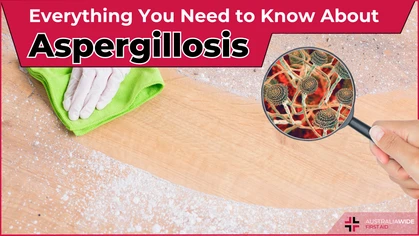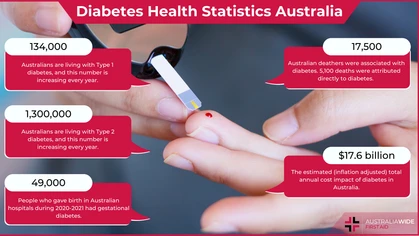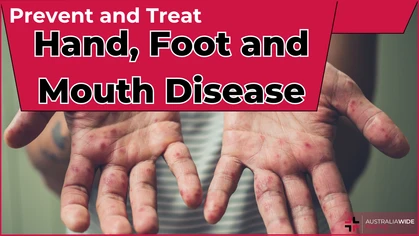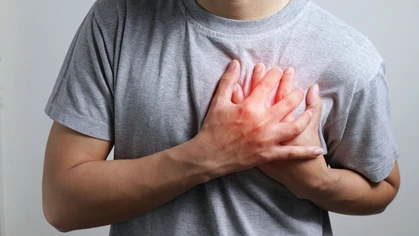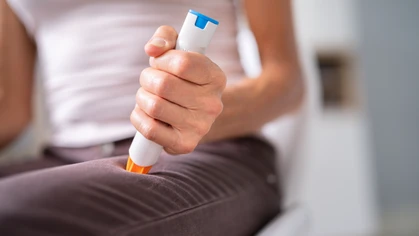Measles – Symptoms, Treatment and Control

Disease
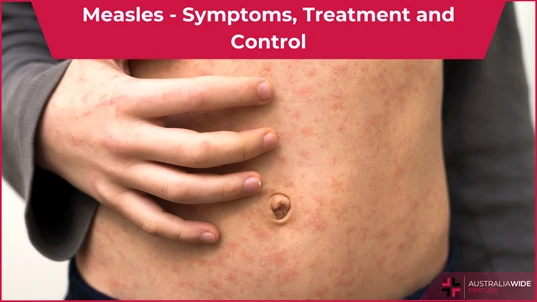 Measles is an acute, highly contagious illness caused by the measles virus. Characterised by a rash and fever, it can lead to serious complication such as pneumonia (lung infection) and encephalitis (inflammation to the brain).
Measles is an acute, highly contagious illness caused by the measles virus. Characterised by a rash and fever, it can lead to serious complication such as pneumonia (lung infection) and encephalitis (inflammation to the brain).
What is Measles?
Measles is caused by the measles virus (Measles morbillivirus). It is highly contagious, and more prevalent in children. Humans are the natural hosts of the virus, with no known animal hosts. This means that we could effectively irradicate measles with continued vaccination. Before Australia’s vaccine schedule included measles, there was a peak in measles notifications and hospitalisations in the mid-1990s. No cases were reports in Australia in 2021, and at the time of publishing in January 2024 we have two reported cases. About 1 in 20 children with measles will develop pneumonia, and 1 in every 1000 will develop encephalitis. Around 2 of every 1,000 children with measles will die.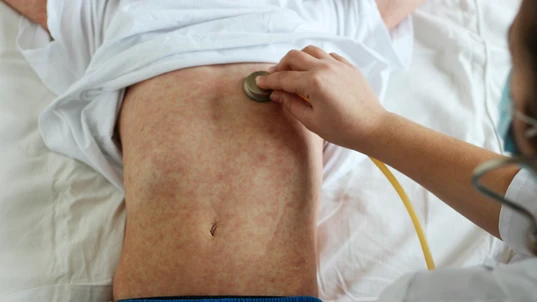
A measles rash is very distinct.
Measles Symptoms
Measles presents very much like a flu in the initial stages. Often it is not until the characteristic blotchy, red rash appears that a diagnosis is made. The initial symptoms of measles include:- Fever
- Tiredness
- Cough
- Runny Nose
- Red, inflamed eyes
- Blotchy, dark red rash
- Middle ear infection
- Diarrhea
- Pneumonia
- The most common cause of death from measles in young children
- Encephalitis, which is swelling of the brain
- This can lead to convulsions, as well as hearing impairment and intellectual disability
- Premature birth
- Low birth weight
- Subacute sclerosing panencephalitis
- A fatal disease of the central nervous system which develops 7-10 years after recovery from measles
- Death
Transmission
Measles is one of the most infectious of all communicable diseases. The virus is spread through the air when an infected person coughs or sneezes, and can linger in the air for a few hours. It is also transmitted through direct contact with secretions from the nose or mouth. A person is infectious for 5 days before the onset of the measles rash, and about 4 days after the rash appears. Those at the highest risk of complications include young children, pregnant people, and medically-vulnerable groups.Immunisation
Immunisation against measles is recommended as part of the National Immunisation Program Schedule. The schedule includes the Measles Mumps Rubella (MMR) vaccine (free of charge) and is required by:- All children aged 12 months
- All children aged 18 months
- Children at 4 years of age who have not previously received a second MMR vaccine
Prevention and Treatment
The only way to prevent measles is through vaccination. Treatment is limited, as it is for all viruses. For mild cases, your doctor will likely suggest rest, fluids, and paracetamol for comfort. Hospitalisation may occur in severe cases, those involving complications, and for people who are part of the vulnerable group.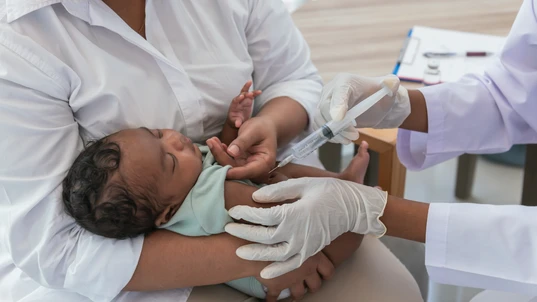
Vaccination is the best prevention strategy for measles.
Control
People with Measles should be excluded from public spaces, work, school, and childcare centres for at least four days after the appearance of the rash. Anyone who has been in contact with a person with measles and have not been vaccinated, or have any condition that compromises the immune system, should be excluded from work, school, or childcare for 14 days from the day the rash appeared on the person diagnosed with measles. If an un-vaccinated person receives the MMR vaccine within 72 hours of their first contact with the original person with measles, they may return to work, school or childcare.Conclusion
Measles is a notifiable illness, with medical staff required to notify their sate department of health. As such, it is something that we should all take very seriously. Signs and symptoms start very similar to colds and flus, so if you suspect that measles may be the cause you should seek medical advice immediately. If you have any concerns, or know of someone displaying the signs and symptoms of measles, please contact your closest medical centre and/or staff.
Originally published at
https://www.australiawidefirstaid.com.au/resources/measles
as part of the Australia Wide First Aid Articles Library



